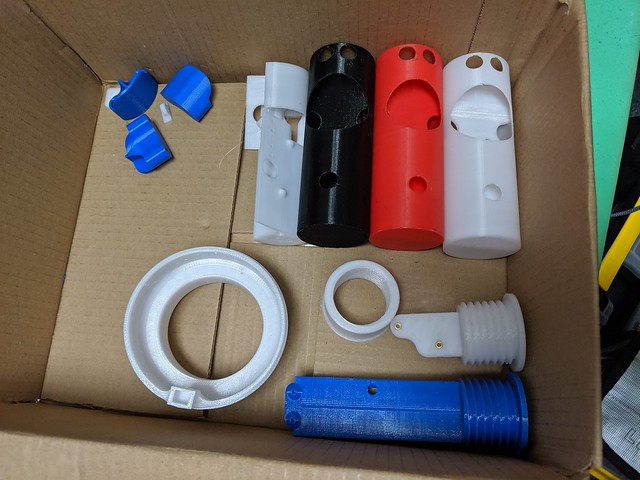Printing upgrade parts for the Creality Ender 3 I just assembled yesterday.
I have to repair mine.

Printing upgrade parts for the Creality Ender 3 I just assembled yesterday.
Thanks.
Just finished the retainer for my Hyperloc 1600... It's "the big one"View attachment 389709
View attachment 374224
A replacement nose cone for my Mach 1 Rocketry BT50 Black Brant kit build. The nose cone includes space for the FireFly altimeter and a shoulder that threads into the bottom of the nose cone to hold the altimeter in place.


So this arrived on Friday.
I plan on printing the new R4 extruder body for my second MK3S that I am building using this PETG. Now correct me if I am wrong, but I believe that this "Carbon Fiber" PETG is created by adding CF powder, not chopped tow. It this is the case how does this add any appreciable strength to the PETG? I thought it was the tow strands that added strength to CF?
That is the Hero Me V3 fan shroud with a 40mm swirl fan guard. I plan on upgrading my part cooling fan to a 5015 as the stock 4010 is pretty weak and I still get curling in some directions.
here are the thing links for the shroud/duct and the swirl fan guard I used.
https://www.thingiverse.com/thing:3182917
https://www.thingiverse.com/thing:3539938
This filament is ideal for anyone that desires a structural component with high modulus, excellent surface quality, dimensional stability, light weight, and ease of printing.

What are your first impressions on the printer?
Bracket to hang some rockets on the walls.
View attachment 392313
Enter your email address to join: